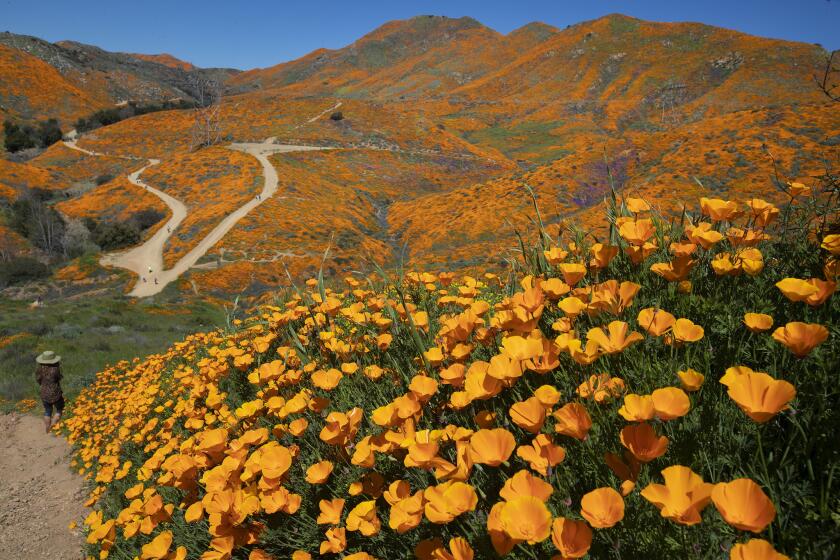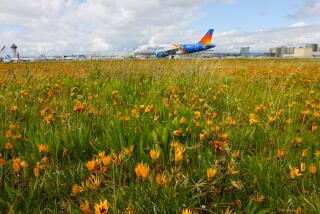Will Southern California see a wildflower superbloom in 2020?
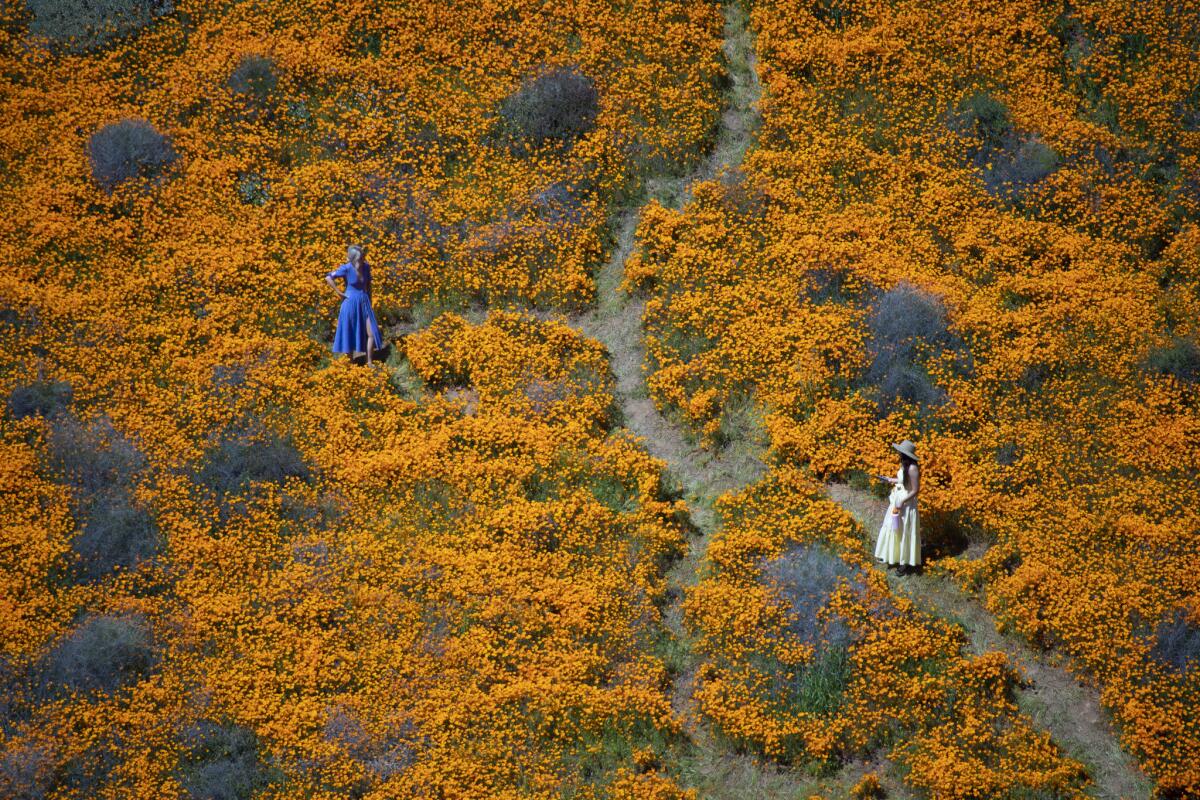
Last year’s superbloom was epic, from Lake Elsinore’s hillsides of golden poppies to Anza Borrego‘s carpets of desert daisies. Check out #superbloom on Instagram; you’ll be kicking yourself if you missed it. So what will the 2020 wildflower season be like?
Right now, it’s too early to say, according to biologists and ecological resource officers who track seasonal shifts. California’s statewide drought officially ended in March, paving the way for the possibility of better blooms this year.
But Southern California’s patchwork of microclimates makes it hard to make a universal prediction about wildflower displays throughout the area. Some places report that, so far, conditions are lining up for what could be another amazing show.
Take the Antelope Valley California Poppy Reserve west of Lancaster, which last year exploded into a sea of orange poppies that lasted well into April. The area has received more than 5 inches of snow so far this season, said Chris Hon, a senior environmental scientist whose district includes the reserve. The cold is vital to cracking open poppy seeds and stimulating growth.
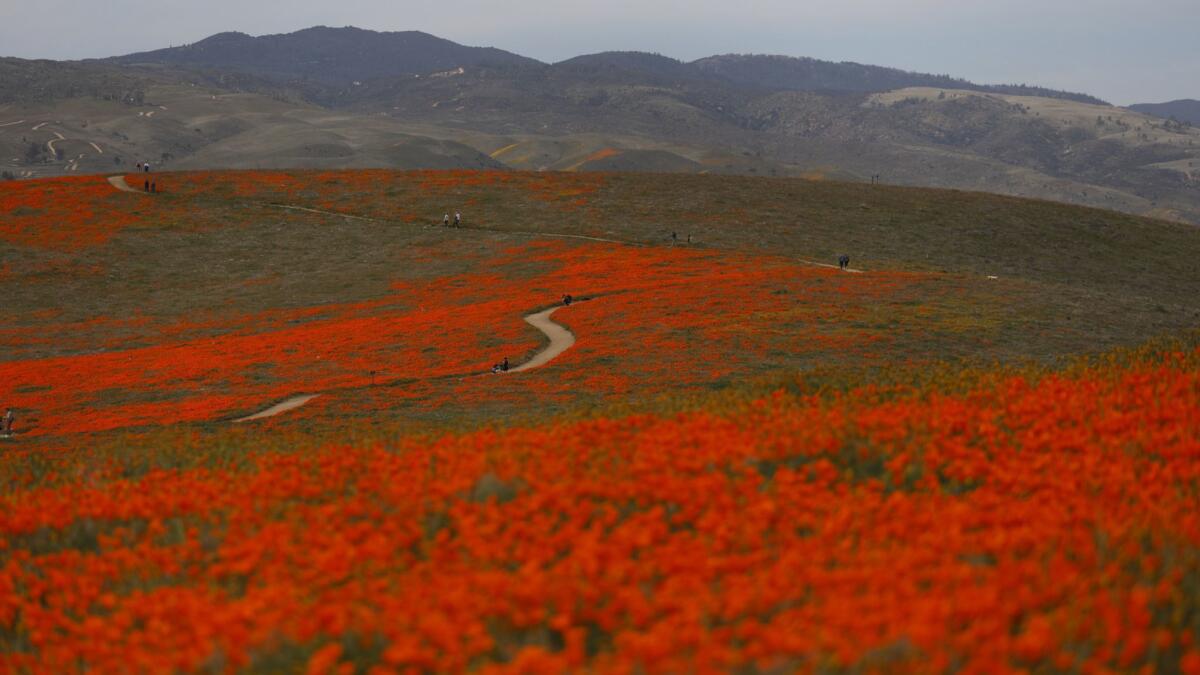
“We have received cold weather as expected for a possible superbloom or whatever you want to call it,” Hon said. “If we have sustained rains to keep the poppies growing, we will likely have some type of superbloom.” Sustained rains means several winter storms in February are needed to keep the ground wet so plants can thrive. A spate of hot temperatures, little rain or high winds could spoil it all, he said.
Last week Hon walked around the reserve to find the ground covered with light green sprouts of poppies and other plants. If the rains come as needed, visitors could see poppies starting to bloom in early March.
Walker Canyon in Lake Elsinore also saw a record bloom last year. Poppy-covered hillsides prompted drivers to stop and abandon their cars along an Interstate 15 exit, causing road closures and so much traffic the city had to set up a shuttle system to handle the crowds. Even then, the area was at capacity and closed down on several days in spring, prompting the city to turn to social media to ask people to stay away.
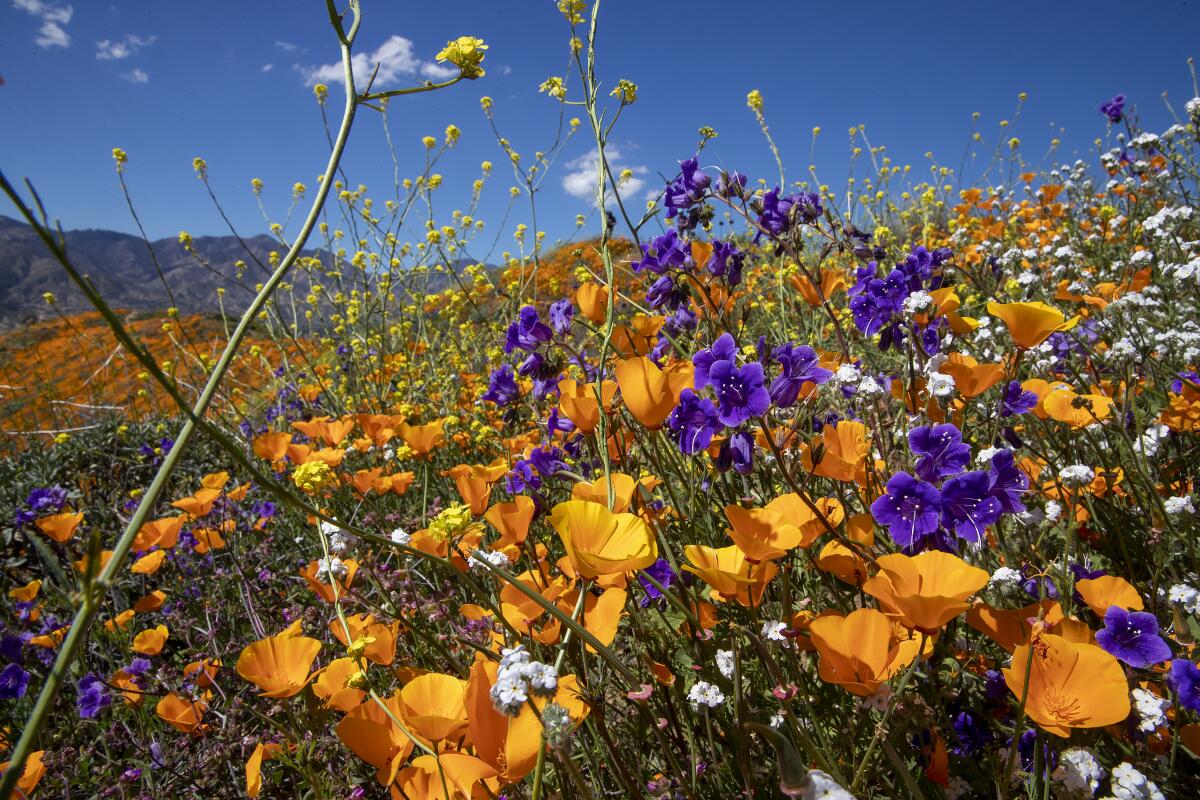
This year, it’s not clear what the poppies will do.
“To germinate and flower, poppies need a lot more rain,” says Betsy Dionne, ecological resource specialist for the Regional County Authority. “We haven’t gotten that yet.” Recent totals for Lake Elsinore since July 1 show 8.56 inches so far this season; last year, the area received a whopping 24.86 inches between July 1, 2018, and June 30, 2019.
Anza-Borrego Desert State Park northeast of San Diego could see a “prominent bloom,” meaning pockets of showy wildflowers blooming among its 600,000 acres. The area received 1.5 inches of rain in November and 1 inch of rain in December, not dazzling moisture totals.
“It could be a good bloom,” says Danny McCamish, senior environmental scientist for the Colorado Desert District and the park. “We’re looking for February to stay cool, under 75 degrees, and enough rain.” But “good” doesn’t mean “super.”
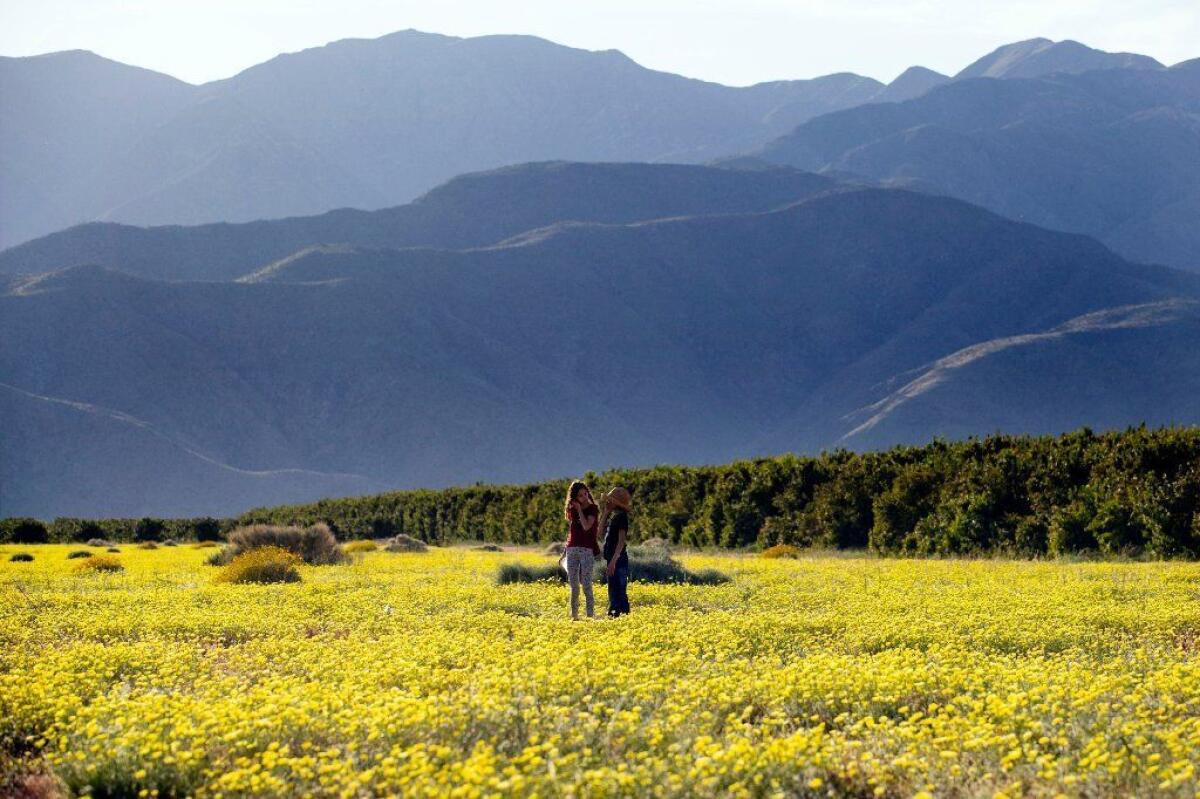
Last year, 4.5 inches of rain fell in February and soaked the entire desert valley, leading to profuse blooms of ground-hugging purple mat, thick stands of yellow bricklebush, fluffy white Fremont’s pincushion, desert primrose and desert lilies.
“All the microclimates across the entire region bloomed all at the same time,” McCamish says.
Farther out, Death Valley National Park east of Los Angeles received 3.22 inches of rain from January to December 2019. September and October were dry, but rainfall rebounded with an average November and an above-average December. The park doesn’t think it can match its superbloom of 2016 this year.
“Several factors have to align for a superbloom, including regular, gentle rain over the course of the winter and spring, mild spring temperatures and lack of strong winds,” the park posted on social media. “The stage has been set for a good — but not excellent — bloom: This fall and winter the park has had 0.95 inches of rain, compared with 1.3 inches of rain in the fall and winter leading up to the 2016 superbloom.
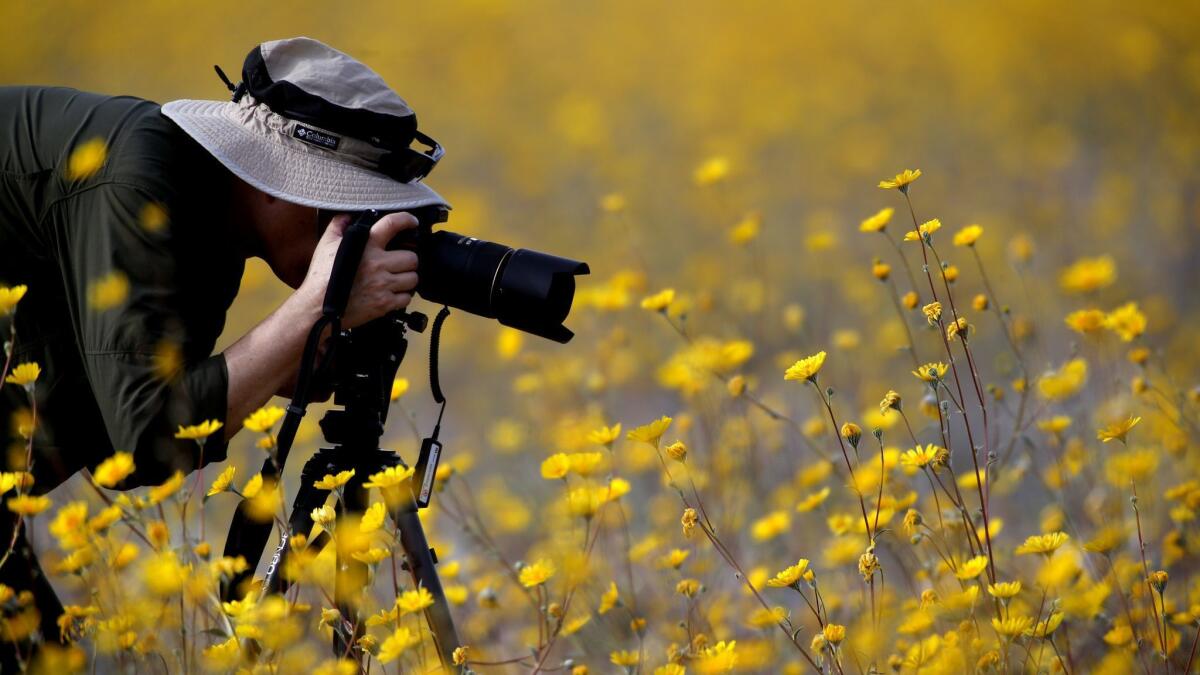
“What happens next depends on the weather in the next couple of months, but current weather modeling shows slightly above-average temperatures for spring. In short, while we do not anticipate a superbloom (which, as the name implies, is not a regular event), we do hope it will be a good year for flowers. Keep your fingers crossed!”
Indeed, stay tuned to see how the weather — and the flowers — unfold. We’ll be updating this story regularly with wildflower reports for these places as well as Carrizo Plain National Monument in Kern County, Joshua Tree National Park and the Santa Monica Mountains.
More to Read
Sign up for The Wild
We’ll help you find the best places to hike, bike and run, as well as the perfect silent spots for meditation and yoga.
You may occasionally receive promotional content from the Los Angeles Times.
